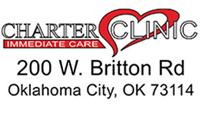The skinny on sugar and added sugar!
The Problem With Added Sugars
Sugar provides energy (i.e., calories) but no additional nutritional value. So, a little bit of sugar might be OK, but a lot of sugar leads to weight gain.
Some people believe high fructose corn syrup is worse for your health than regular sugar, but there isn’t enough credible scientific evidence to back that claim. They’re both made up of a similar combination of glucose and fructose, and both have the same effect on the body.
The problem with sugary foods is eating or drinking too much of it. When you eat too much sugar, there’s a good chance you’re going to gain weight because it’s high in calories. Plus, sugary foods aren’t usually nutritious.
They usually don’t have enough vitamins and minerals to make up for all the extra sugar.
Finding Added Sugars
Sugary soft drinks, pastries, cookies, candy bars, syrups, jams, jellies, and pre-sweetened breakfast cereals are all obvious sources of added sugars. But other foods such as salad dressings, flavored yogurts, instant oatmeal, and fruit smoothies can also contain added sugars.
Since there are several forms and types of sugars, it helps to know what you’re looking for. Grab your packaged food and look for the ingredients list. If you see any of these, you’ve got added sugars:
- sugar
- brown sugar
- high fructose corn syrup
- corn sugar
- syrup
- corn syrup
- fructose
- glucose
- sucrose
- raw sugar
- turbinado sugar
- honey
If any of these words appear on the ingredients list, be sure to look at the Nutrition Facts Label to determine how much of the added sugars are lurking in each serving. It may be just a small amount of sugar, or it might be a lot.
Reduce Your Added Sugar Intake
Start by reading labels and choosing the products that have the least added sugar. You don’t have to give up sweet foods altogether, just make healthier choices.
- Fruits and berries are sweet and contain no added sugars.
- Buy plain yogurt and add sliced fresh fruits or maybe just a little honey.
- Skip the pre-sweetened breakfast cereals and add a little sprinkling of sugar, or use a zero-calorie sweetener like stevia or sucralose.
What About Natural Sugars?
Fruits and fruit juice are naturally sweet, so they don’t need any added sugar in most cases. They may be sweet, but they aren’t classified as having added sugar. Well, unless they’re turned into a fruit drink like most cranberry juice beverages that are a combination of fruit juices with sugar and water.
Here’s the thing with natural sugars. Fruits and 100-percent fruit juice are not sugary foods, but you may need to watch the calorie count. A glass of fruit juice may have as many calories as the same size glass of sugary soft drink. But that fruit juice also has vitamins and minerals that the soft drink doesn’t have.
Is Honey Any Better?
Honey is a natural sugar because bees make it, whereas regular sugar is made from beets, corn, or sugar cane. But honey is often used as an ingredient, so it’s a lot like an added sugar. Nutritionally, honey is about the same as sugar or high fructose corn syrup, so foods made with honey are still considered sugary. Technically, honey does contain some nutrients, but it’s just a tiny amount, which is not enough to improve your diet.
But I Love Sugar—What Do I Do?
Eat less of it. If you can’t do without your favorite sweets, just be sure to watch your intake. About 100 to 200 calories per day are about all you should consume.
Some foods don’t need the extra sugar or they can be sweetened naturally, like yogurt. So you can buy sweetened yogurt that’s full of sugar, or you can buy plain yogurt and add fresh fruits or berries. If that’s not sweet enough for you, you can add a little honey or sugar. But be careful—a tablespoon of honey has about 60 calories, and a tablespoon of sugar has about 50.
Same with breakfast cereals. The pre-sweetened varieties usually have lots of sugar. Look for brands that have less than 5 grams sugar per serving, and choose the brands with the most fiber. Or make your own oatmeal or plain unsweetened cereal and add fruits and berries, or just a little sugar on top.
Zero-calorie sweeteners can take the place of sugar in some foods and beverages, but they’ll alter the flavor a bit.



